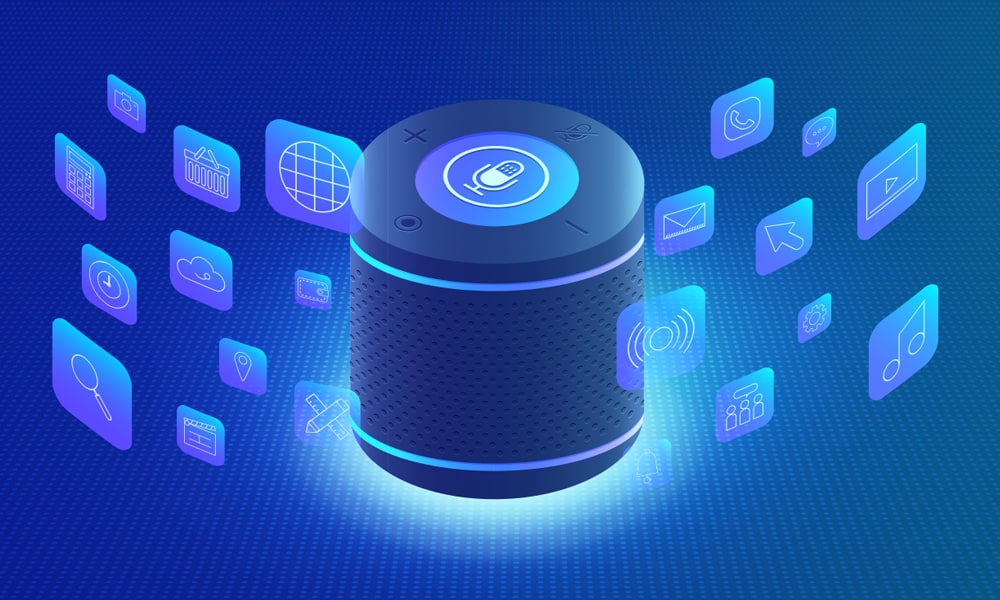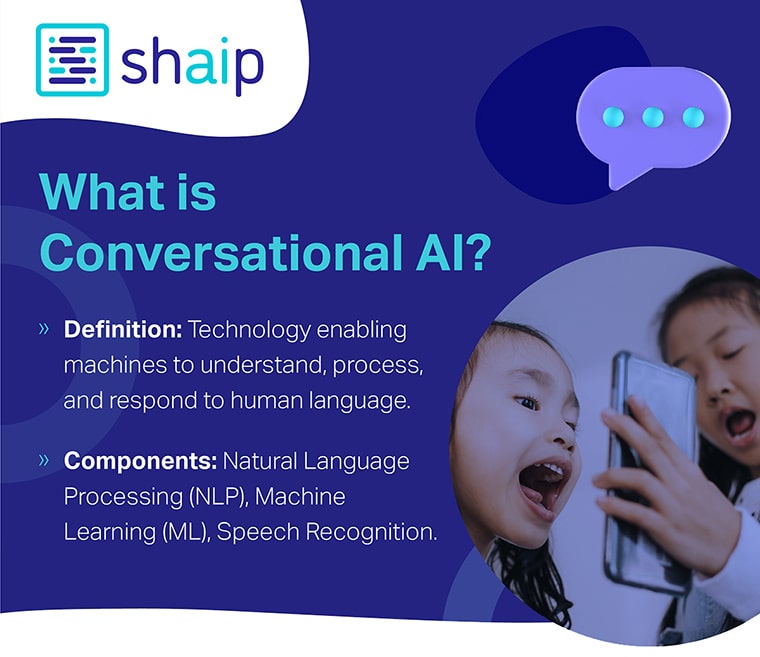
What is Conversational AI?
Conversational AI is technology that enables machines to understand and respond to human language naturally. It combines Natural Language Processing (NLP), Machine Learning (ML), and Speech Recognition to create systems that can engage in human-like conversations, learning and improving over time.
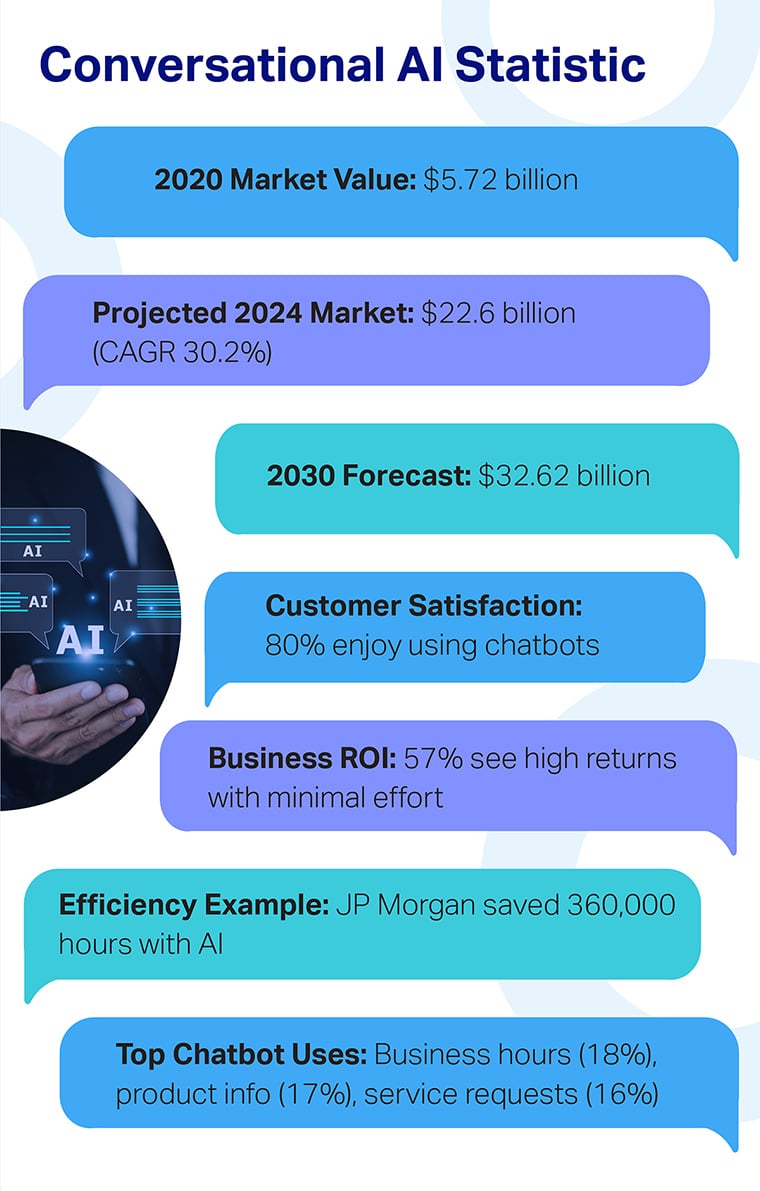
Conversational AI Statistic
Conversational AI is booming, with its market value jumping from $5.72 billion in 2020 to a projected $22.6 billion by 2024. By 2030, it’s expected to hit $32.62 billion. People love using chatbots, with 80% enjoying their interactions. Businesses benefit too, with 57% seeing high returns and examples like JP Morgan saving 360,000 hours. Chatbots are mainly used for business hours, product information, and service requests.
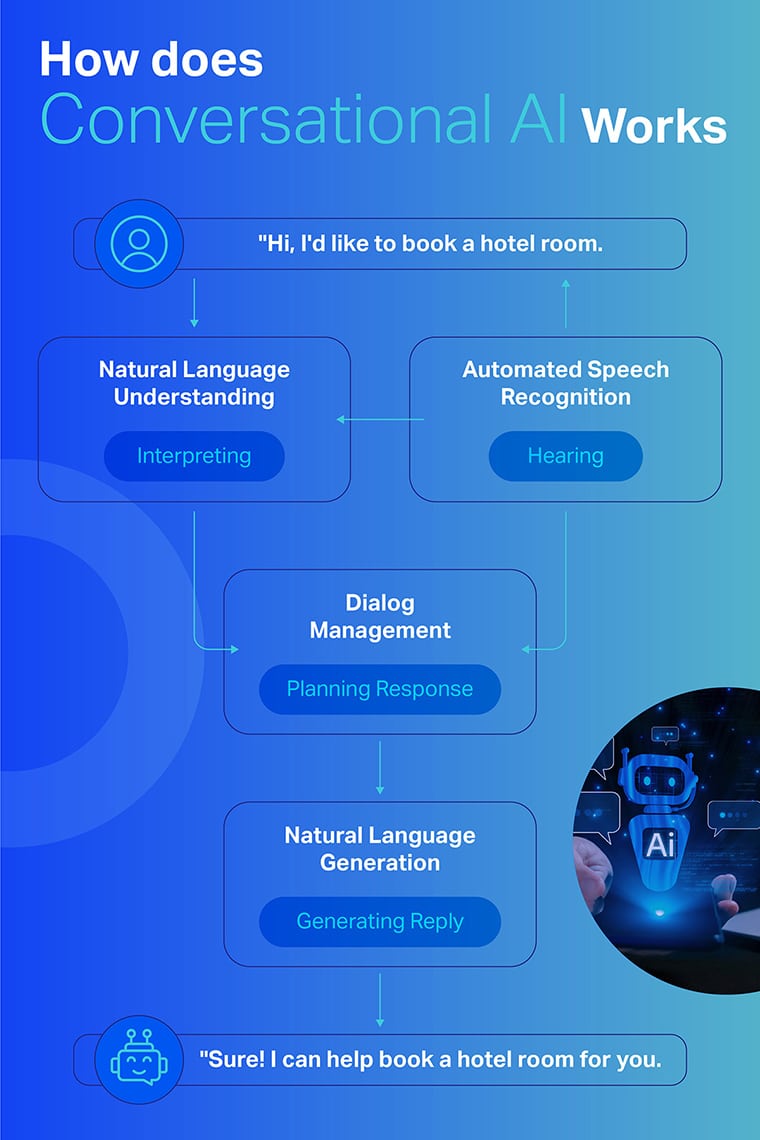
How does Conversational AI Works
Conversational AI works by taking user input, like “Hi, I’d like to book a hotel room,” and processing it through several steps. First, it uses Automated Speech Recognition to “hear” the words. Then, Natural Language Understanding interprets the intent. Dialog Management plans how to respond, and Natural Language Generation creates a human-like reply, such as “Sure! I can help book a hotel room for you.

Benefits of Conversational AI
Conversational AI offers 24/7 help, cutting costs by automating tasks. It personalizes interactions using user history and supports multiple languages for better accessibility. By handling simple questions, it boosts productivity, freeing up employees for complex work. Plus, it continuously learns and improves over time.
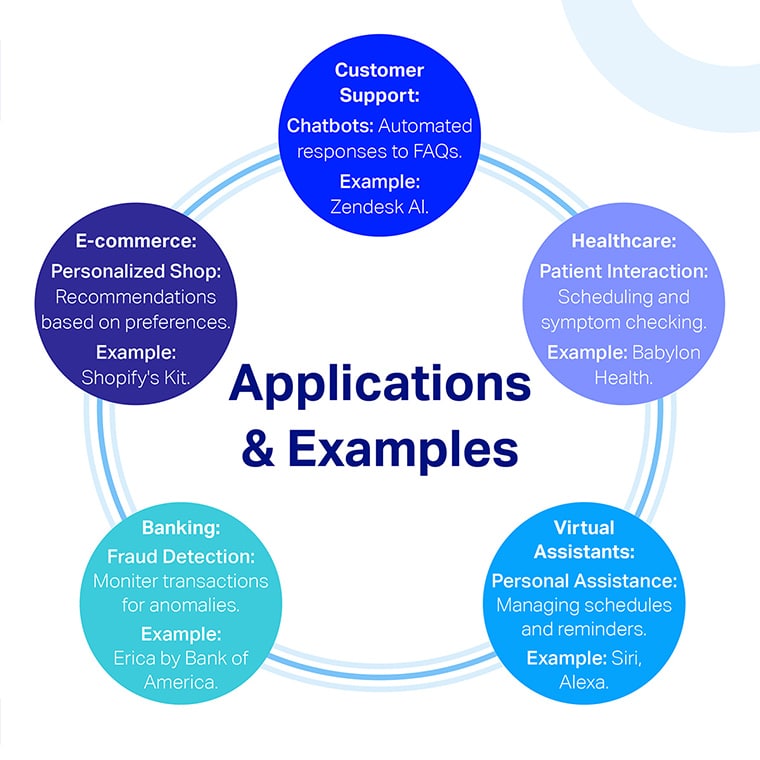
Applications and Examples of Conversational AI
Conversational AI is transforming industries by streamlining tasks and enhancing user experiences. In customer support, it handles common questions automatically. Virtual assistants help with daily tasks like scheduling. In healthcare, AI manages appointments and checks symptoms. E-commerce uses it to personalize shopping, and in banking, it monitors transactions to detect fraud. Overall, conversational AI makes services more efficient and accessible.
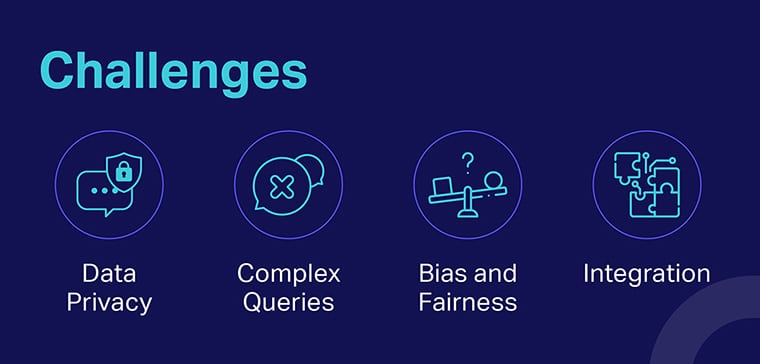
Challenges of Conversational AI
Conversational AI faces several challenges. Data privacy is a major concern, as handling sensitive information requires robust security measures. Complex queries can be difficult for AI to interpret accurately, often requiring advanced processing capabilities. Bias and fairness are also issues, as AI systems can inadvertently reflect societal biases present in their training data. Additionally, integrating AI into existing systems can be challenging, requiring time and resources to ensure seamless operation.
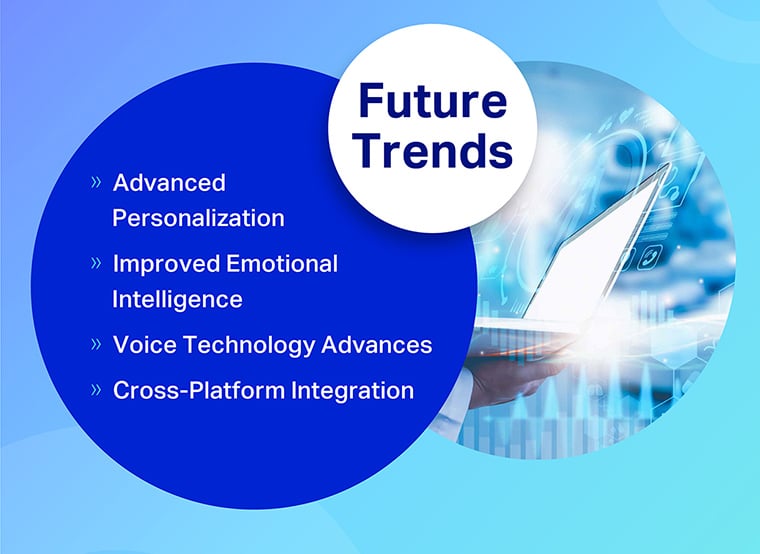
Future Trends
The future of conversational AI is exciting, with a focus on advanced personalization and better emotional intelligence to understand users’ emotions. Voice technology is set to become more accurate and natural, while seamless cross-platform integration will allow for smoother experiences across devices.









